Kirkland Stainless Steel Cookware vs. All-Clad: The Kirkland Signature set is an excellent, budget-friendly alternative offering great heat distribution and durability comparable to premium All-Clad sets, making it the smart choice for most home cooks prioritizing value without massive performance sacrifice.
Choosing new cookware feels like a big decision. You want pots and pans that heat evenly, last forever, and don’t break the bank. Many of us look at big names like All-Clad and wonder if the high price is truly worth it. Then there’s the Kirkland Signature line—Costco’s house brand—which offers amazing value. It gets confusing fast! Don’t worry; we’ll sort out the kirkland stainless steel cookware vs all-clad debate. This guide breaks down what you really get for your money, making choosing simple and stress-free. Let’s find the best fit for your kitchen!
Why Cookware Quality Really Matters (It’s Not Just About Looking Good)
When we talk about quality cookware, we aren’t just worried about whether it looks nice in your cabinets. The materials used directly affect how you cook. Think about it like this: your car needs good tires for safe driving; your food needs good pans for even cooking.
A major headache for home cooks is “hot spots.” That’s when one part of the pan gets scorching hot while another stays lukewarm. This leads to burnt spots next to undercooked food. Good stainless steel cookware solves this by using layers of metal, which spread the heat evenly across the entire cooking surface.
We are comparing two heavy hitters here:
- All-Clad: The industry benchmark, famous for its fully clad construction (layers running all the way up the sides).
- Kirkland Signature: Costco’s highly-rated stainless steel line, known for offering near-premium performance at a fraction of the cost.
Understanding Cookware Construction: The Cladding Secret
Most good stainless steel pans are not just one piece of metal. They are usually “clad.” Cladding means layering materials together—usually stainless steel on the outside (for durability and non-reactivity) and aluminum or copper on the inside (for excellent heat transfer).
What is Fully Clad vs. Disc Bottom?
This is the most crucial difference between mid-range and top-tier cookware, and it separates Kirkland and All-Clad.
- Fully Clad (All-Clad’s Specialty): The layers of metal (stainless steel and aluminum core) run from the very bottom all the way up the sides of the pan. This ensures heat moves evenly up the sides as well as the bottom.
- Disc Bottom (Common in Value Brands): A thick disc of aluminum is sandwiched only into the bottom of the pan. While the base heats well, the sides can run cooler, leading to less consistent cooking results, especially when searing meat or sautéing vegetables.
Kirkland Signature generally uses a fully clad design for its main lines, mimicking the premium construction of All-Clad, which is why this comparison is so interesting!
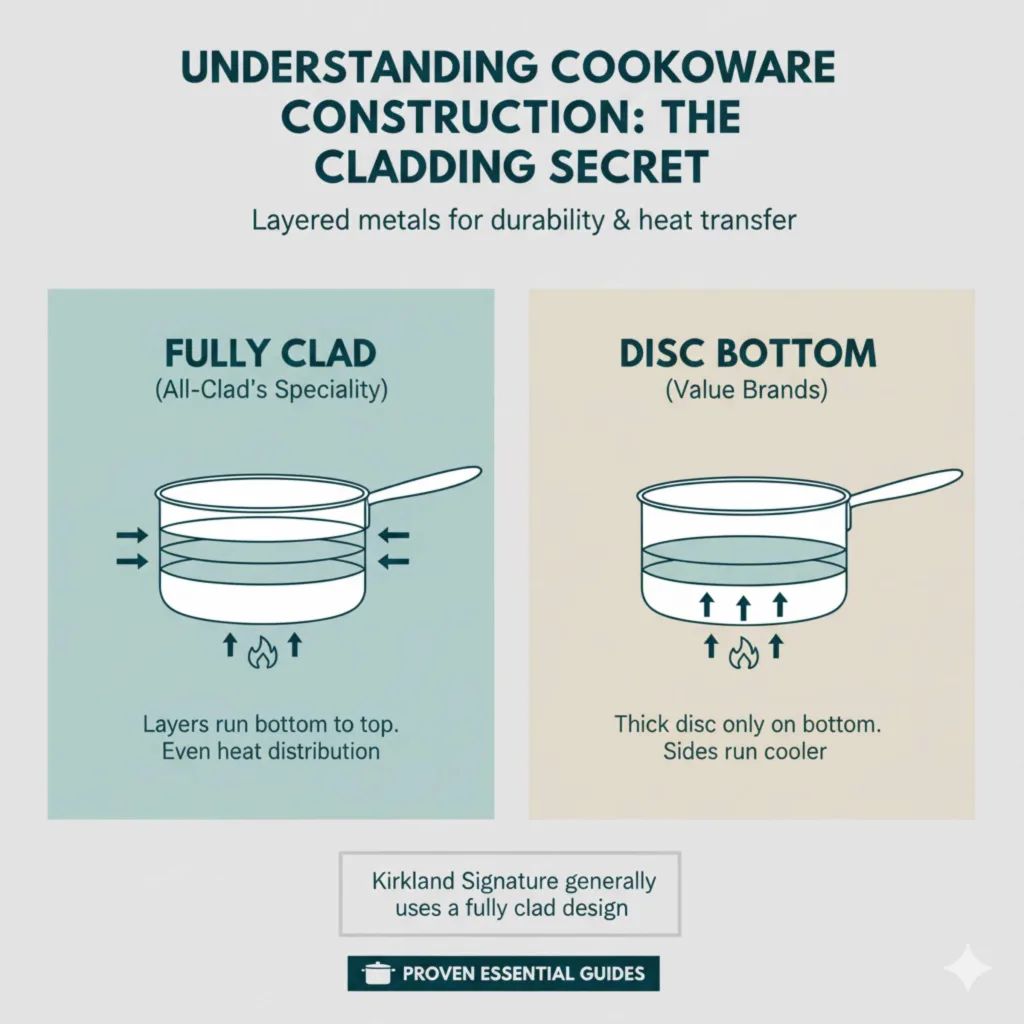
Kirkland Stainless Steel Cookware Deep Dive
Kirkland Signature cookware is sold by Costco and enjoys a massive following because it delivers a lot of quality for what you pay. If you are looking for a reliable set that won’t make you take out a second mortgage, this is a fantastic starting point.
What Makes Kirkland a Contender?
- Material Quality: They typically use high-grade 18/10 stainless steel on the interior (which resists staining and corrosion) and a multi-ply construction that includes an aluminum core.
- Stovetop Compatibility: Like All-Clad, nearly all Kirkland stainless steel sets are induction-ready because they have a magnetic stainless steel layer on the exterior base. This is great for future-proofing your kitchen setup.
- Durability: These pans are built tough. They handle high heat and regular use well, much like their expensive counterparts.
Pros and Cons of Kirkland Signature Cookware
Thinking about upgrading can be tough. Here is a quick look at where Kirkland shines and where it holds back compared to the very top tier.
| Pros (The Good Stuff) | Cons (Areas to Note) |
|---|---|
| Exceptional Price-to-Value Ratio | Brand recognition is lower than All-Clad |
| Often features full or near-full cladding | Handle design might not feel as perfectly sculpted as All-Clad |
| Dishwasher safe (though handwashing is always recommended for longevity) | Limited availability (must buy through Costco) |
| Heavy-gauge construction; retains heat well | May require a short “break-in” period to master sticking |
All-Clad Showdown: The Industry Gold Standard
All-Clad is often seen as the pinnacle of home kitchen cookware. If you ask a professional chef what they rely on, chances are high they might say All-Clad. They pioneered the bonded (clad) cookware concept decades ago.
When you buy All-Clad, you are paying for consistency, meticulous engineering, and that famous, durable construction.
Deep Dive into All-Clad Construction
All-Clad often uses three or five layers throughout the entire body of the pan. For instance, their D3 line features three layers: stainless steel/aluminum core/stainless steel, running completely up the sides. Their D5 line adds even more layers for even better heat control.
This commitment to full-surface cladding means that when you sauté onions and toss them, the onions on the side of the pan have the exact same heat exposure as the onions touching the bottom.
Pros and Cons of All-Clad Cookware
- Pros: Unmatched, consistent heat distribution; incredible durability; lifetime warranties; handles oven heat extremely well; iconic, professional feel.
- Cons: Very high upfront cost; the signature handle (while secure) is famously uncomfortable for some users; heavy.
Kirkland Stainless Steel Cookware Vs All-Clad: The Direct Comparison
This is where we put them head-to-head on the factors that matter most to your cooking experience. We are generally comparing Costco’s best stainless steel offerings against All-Clad’s popular D3 or D5 lines.
| Feature | Kirkland Signature Stainless Steel | All-Clad Stainless Steel (D3/D5) |
|---|---|---|
| Price Point (Per Piece) | Low to Mid-Range | High to Premium |
| Cladding Style (Generally) | Full or near-full bonding | Full 3-ply or 5-ply across the entire pan |
| Heat Evenness | Very Good (Excellent for the price) | Superior (Best in class) |
| Handle Comfort | Generally comfortable, sturdy design | Iconic U-shape; secure but can be uncomfortable for some grips |
| Oven Safety | High temperature limits (check specific model) | Very high limits (usually 600°F+) |
| Availability | Costco Stores/Online Only | Widespread retail and online |
The Real Difference: Performance vs. Price
For the average home cook who prepares meals several times a week, the performance difference in everyday tasks like scrambling eggs, simmering sauces, or boiling pasta will be minimal. Both perform very well because both utilize layered aluminum cores.
Where All-Clad pulls ahead is in extreme scenarios. If you are constantly searing steaks at very high heat for extended periods, the absolute uniformity of heat distribution across the entire side walls of an All-Clad pan might provide a slight edge in achieving a perfect, edge-to-edge crust.
However, that marginal difference in peak performance often doesn’t justify the 200% or 300% price increase for most folks. You can buy a complete Kirkland set for the price of one high-end All-Clad piece.
How to Choose the Right Cookware For You
Making the final choice depends entirely on your budget, cooking habits, and how often you cook. Let’s break down the decision process simply.
Step 1: Assess Your Cooking Style
Ask yourself these simple questions:
- Do I cook every single day, or just occasionally? (Daily cooks benefit more from investment.)
- Do I ever need to sear large pieces of meat perfectly edge-to-edge? (If yes, lean toward All-Clad.)
- Am I using an induction stove? (Both options generally work well.)
- How much do I value a lifetime warranty versus immediate savings?
Step 2: Evaluate Your Budget Needs
Here is a direct path to deciding based on cost:
- Go Kirkland If: You are setting up a new kitchen, replacing older sets, or need multiple pieces (like a full 10-piece set) without spending over $500-$700. It offers the best dollar-for-pound performance available.
- Go All-Clad If: You have the budget, you cook professionally or semi-professionally, or you only need one or two specialty pans (like a 10-inch skillet) that you want to last longer than your retirement.
Step 3: Consider Longevity and Care
Both types of stainless steel cookware require similar care to stay looking great and performing well. If you neglect them, they will both eventually discolor or develop stubborn spots.
To maintain that beautiful, shiny finish (and ensure great cooking performance), follow these simple maintenance tips, which apply equally to both brands. For deeper cleaning, you can look at official guidelines from organizations like the National Institute of Standards and Technology (NIST) regarding metal longevity.
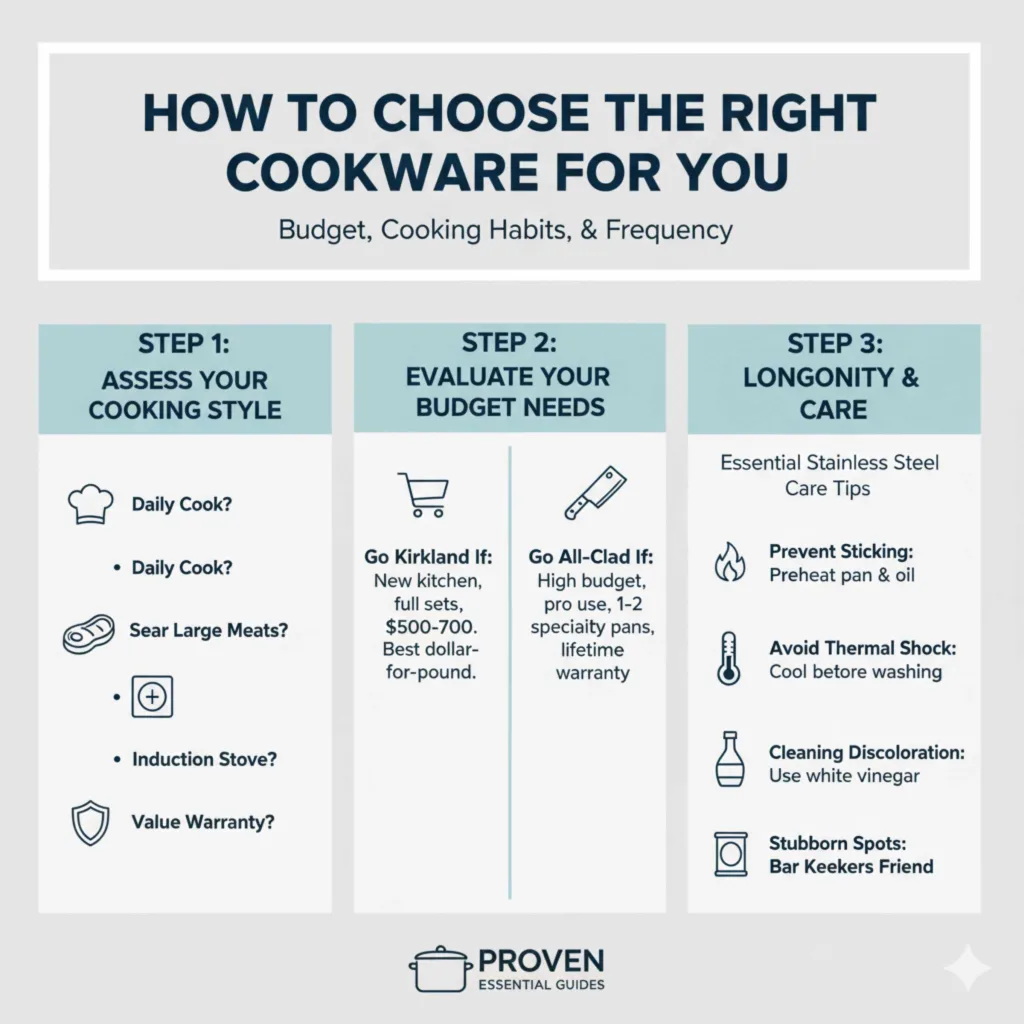
Essential Stainless Steel Care Tips
- Prevent Sticking: Always preheat the pan on low-medium heat before adding oil. Then, let the oil heat up slightly before adding food. This simple step prevents 90% of sticking issues.
- Avoid Thermal Shock: Never plunge a screaming-hot pan into cold water. Let it cool down first. Rapid temperature changes can warp the metal, even in high-quality clad pieces from both brands.
- Cleaning Discoloration: If you see rainbow-like heat-tinting (called annealing), use a splash of white vinegar and wipe it gently. This instantly removes the discoloration.
- The Bar Keepers Friend Trick: For stubborn brown or cooked-on residue, Bar Keepers Friend powder is the secret weapon for both Kirkland and All-Clad enthusiasts.
The Weight Difference Factor
Another place buyers often notice a difference is in how the pans feel in your hand. Because All-Clad often uses more layers (like 5-ply in their D5 line) extending over a greater surface area, they can often feel slightly heavier or more substantial than equivalent Kirkland pieces.
Remember the handles: All-Clad’s famous U-shaped handle is designed to lock into your grip and resist slipping. However, many find the sharp edges uncomfortable when lifting a heavy, full pan of food. Kirkland handles are often more rounded and traditionally shaped, which many new users prefer.
Can Kirkland Cookware Handle Professional Heat?
If you are worried that because Kirkland is less expensive, it can’t handle high heat, set those worries aside. High-quality stainless steel (which both lines are) is designed to withstand the high temperatures needed for professional searing or deglazing that creates great pan sauces.
If your stovetop generates intense, direct heat (like a powerful gas burner), both the Kirkland and All-Clad clad construction are designed to distribute that heat safely across the surface without breaking down.
The key safety factor relates to oven use. Always check the manual, but generally, both high-quality sets are safe to temperatures well over 500°F (260°C), making them suitable for finishing dishes in the oven.
Final Verdict: Which One Should You Drive Home Today?
Choosing cookware is a lot like choosing a reliable vehicle. You can buy the top-of-the-line luxury model known for engineering perfection (All-Clad), or you can choose the extremely dependable, well-engineered mid-range model that saves you thousands without feeling cheap (Kirkland).
For the vast majority of home drivers—excuse me, home cooks—the kirkland stainless steel cookware vs all-clad debate lands firmly in favor of value.
Kirkland Signature offers 90% of the performance of All-Clad at 40% of the price. It’s a smart, practical investment that gives you the excellent heat distribution needed for great cooking results for years to come.
If budget is not a constraint and you demand absolute perfection in thermal performance matched by lifetime brand confidence, All-Clad remains the pinnacle. But for that everyday confidence boost in the kitchen, Kirkland is the clear winner for smart shoppers.
Frequently Asked Questions (FAQ) for Beginner Cooks
Q1: Is Kirkland Stainless Steel truly induction compatible?
A: Yes, most of the newer Kirkland Signature stainless steel lines are built with a magnetic base layer, meaning they work perfectly on induction cooktops just like All-Clad.
Q2: Will Kirkland Signature cookware stick as much as regular cheap stainless steel?
A: It can stick if you use it incorrectly. Sticking in stainless steel is usually an issue of technique (not preheating the pan or using enough oil). When heated properly, Kirkland performs very well and reduces sticking significantly better than cheap, non-clad pans.
Q3: Are the handles on the Kirkland set comfortable?
A: Generally, yes. Many users find the handles on Kirkland cookware more ergonomically friendly and rounded compared to the infamous U-shaped handle design on many All-Clad pieces.
Q4: Do I really need “fully clad” cookware if I’m just boiling water or making soup?
A: For simple tasks like boiling water, a disc-bottom pan is fine. But for sauces or simmering, fully clad construction (like what both brands offer) prevents scorching on the bottom and ensures the entire liquid mass heats evenly.
Q5: How do I clean the exterior stainless steel to keep it shiny?
A: Use a gentle washcloth with warm water and dish soap first. For tough spots or white mineral deposits, a little white vinegar or Bar Keepers Friend applied with a soft sponge will restore the shine quickly.
Q6: Can I put both brands in the dishwasher to save time?
A: While both brands legally state they are dishwasher safe, we highly recommend handwashing. Dishwashers use harsh detergents that can cause dulling, pitting, or discoloration over many cycles, which impacts performance over time.
We’ve covered the construction, the costs, and the performance differences. Whether you choose the reliable powerhouse that is Kirkland or the established champion All-Clad, remember that the best pan is the one you feel confident using. By understanding the layers inside, you’ve already taken the biggest step toward great cooking results. You are now equipped to make an informed choice that fits your kitchen needs and your budget perfectly. Happy cooking!


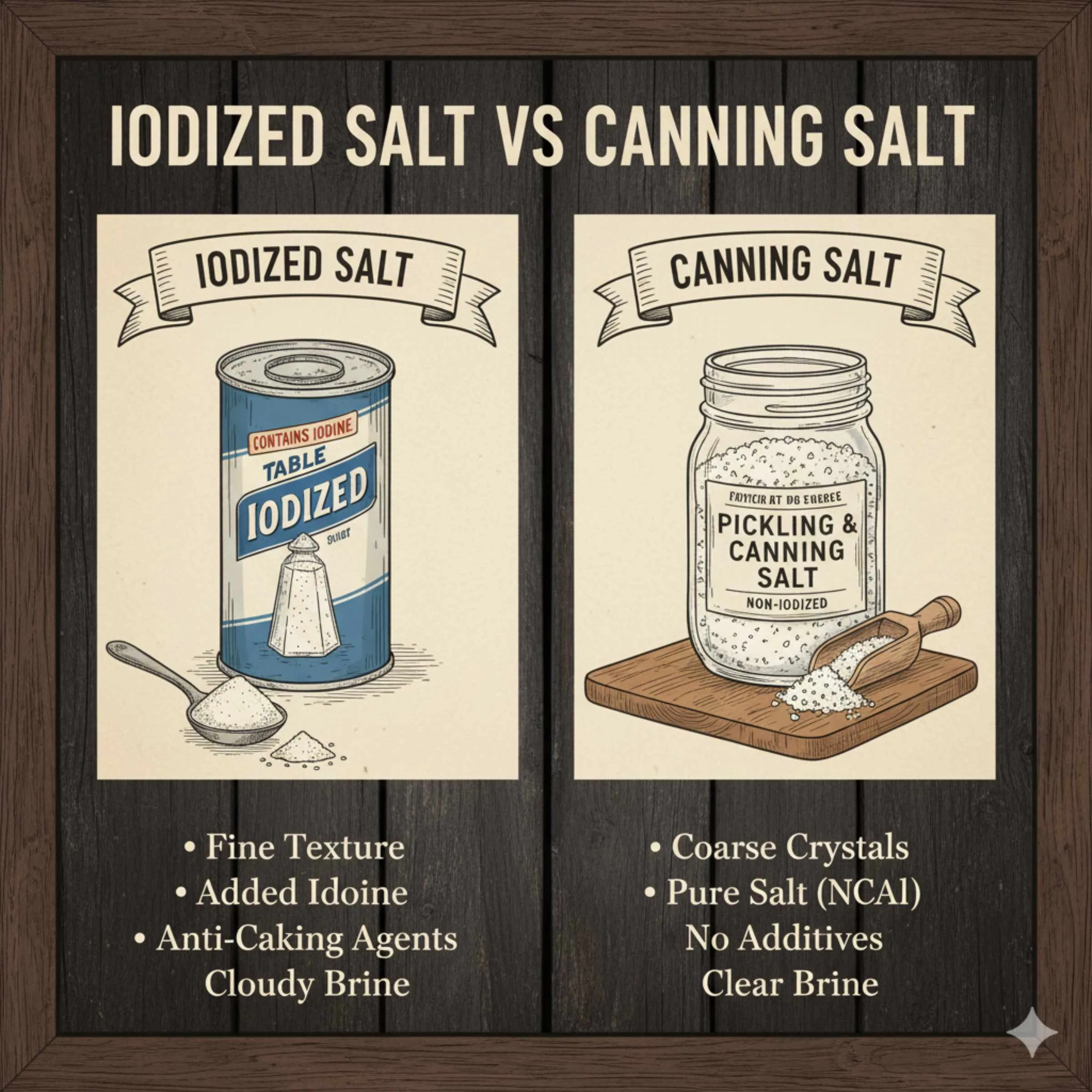
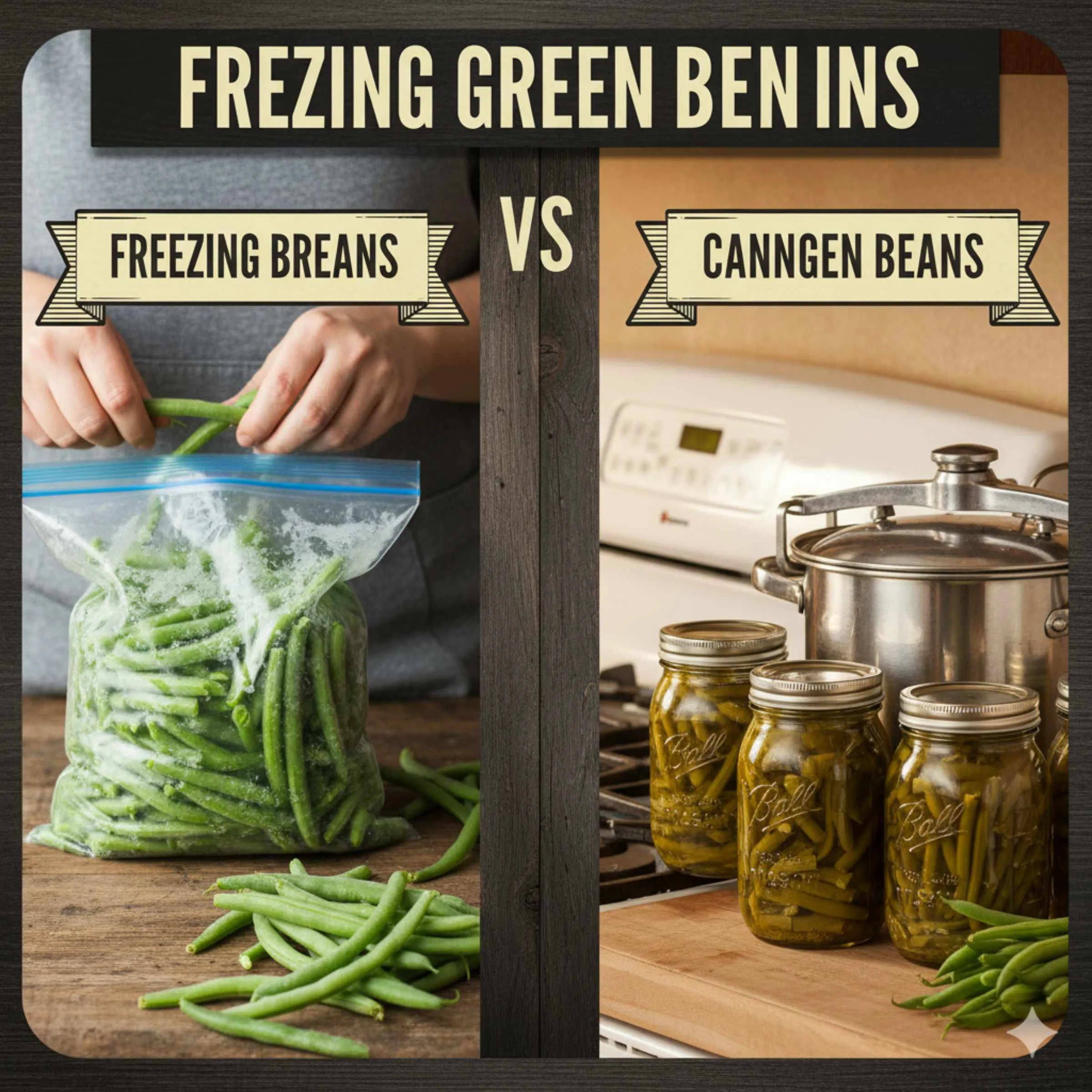


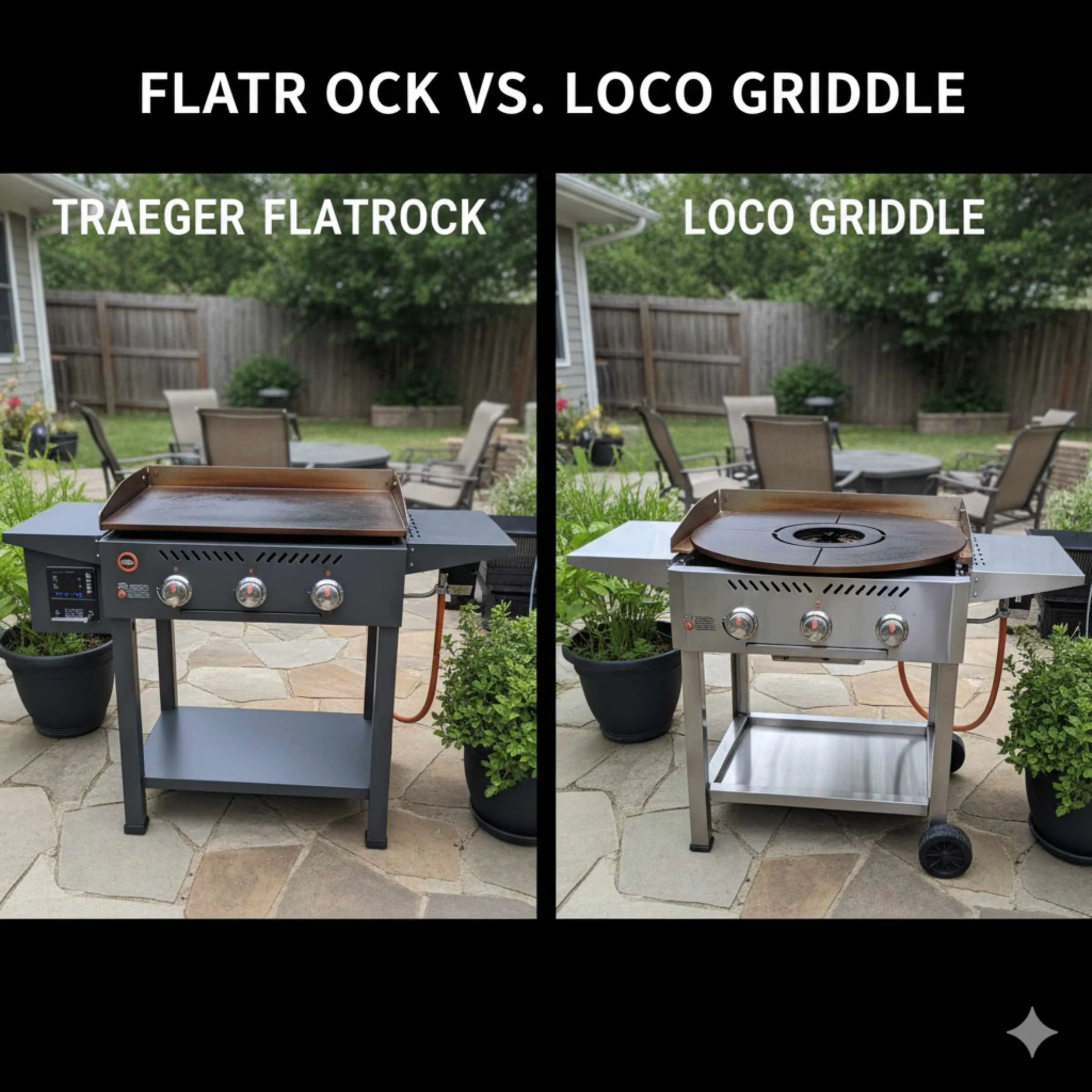

Leave a Reply